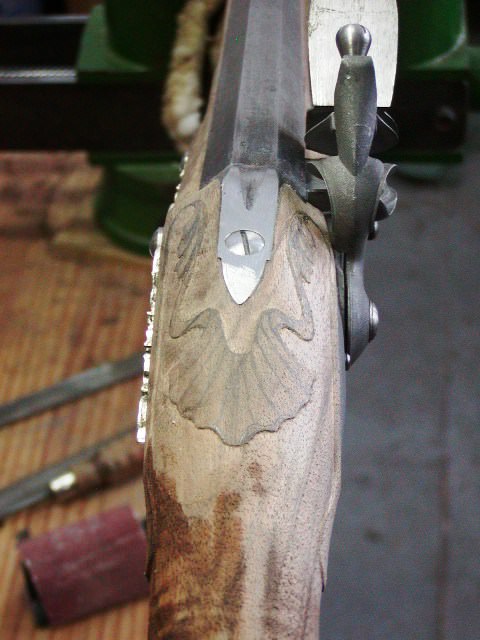correction, amateurs...not armatures!



Oh, a book would be fantastic.Hi Bob and thanks,
I am thinking about it, one that focuses on making British flintlock guns. Something that fills in gaps in other resources like "Gunsmith of Grenville County" or "Recreating the American Longrifle". I have to figure out how to go about it though.
dave

Dave, thanks again and to let you know I've already used your info from other posts on my last build and it made a difference...big time!Dear Hatman,
That is why I do this. I am trying to offer information that you may not get anywhere else unless you are working in the shop of a maker of these kinds of guns. And some of what I am presenting is what you might learn from those working in the 18th century gun trade in London. My purpose is to expand your understanding and inspire you to try hard things in making guns and to honor those craftsmen from yore who did this kind of stuff routinely.
dave
You are the man Dave, you made my year. Im in the gumakers guild and am very impressed with your work and now I want to try it. Thank you also for the posts.Hi Frankie,
Thank you. I've posted my work on this forum many times over the years. If you use the search tool you will find a lot. Here are some past threads.
https://www.muzzleloadingforum.com/...nto-a-dublin-castle-short-land-musket.138872/https://www.muzzleloadingforum.com/threads/building-a-chambers-isaac-haines-rifle-kit.116533/https://www.muzzleloadingforum.com/threads/kibler-kit-assembly-and-carving.133549/https://www.muzzleloadingforum.com/...pton-valley-spring-rifle.133456/#post-1862408https://www.muzzleloadingforum.com/threads/building-an-edward-marshall-rifle.128586/https://www.muzzleloadingforum.com/threads/making-a-1770s-british-rifled-officers-fusil.120093/
In each, I try to add historical details and explain their context so there is a lot of information packed in each thread but you have to read them all the way through to find it all.
dave


















